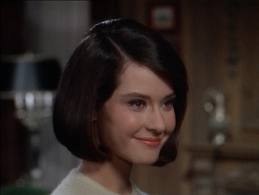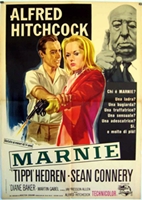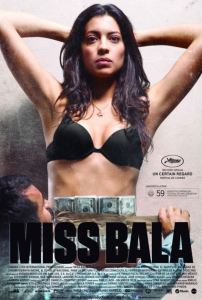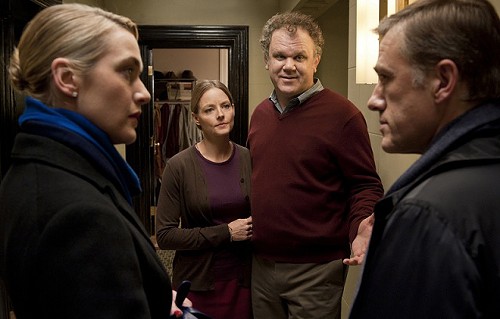 Sound of Noise/2010/Magnolia Pictures/102 min.
Sound of Noise/2010/Magnolia Pictures/102 min.
The cop drama gets a frenetic comic spin in “Sound of Noise” by Swedish filmmakers Ola Simonsson and Johannes Stjärne Nilsson. When a group of six drummers decides to unleash anarchy by commandeering everyday objects (medical equipment, paper shredders, jack hammers) to use as makeshift instruments, they draw the ire of a police officer with an ax to grind.
Amadeus Warnebring (Bengt Nilsson) is the tone-deaf black sheep in a family of prominent musicians and, though he hates music, he has what it takes to track down these percussive renegades. “There’s a metronome here somewhere,” Amadeus tells his team as he surveys the scene after one of the gang’s hit-and-run performances. “Find it.”
Leading the raids is a take-charge blonde named Sanna Persson (Sanna Persson Halapi), who has decided it’s time to strike back in a city that’s “contaminated by shitty music.” (The city as well as the exact time is undefined; the film was shot mostly in Malmö, Sweden.) Despite his frustration, which he vents at one point by smashing instruments, Amadeus also finds it hard to resist Sanna’s allure.
Weirdly original and whimsically entertaining, “Sound of Noise” charms in a way that’s delightfully absurd and singularly Swedish. Bengt Nilsson brings just the right amount of loner intensity to Amadeus; Sven Ahlstrom neatly complements as Amadeus’ brother Oscar, golden boy and admired conductor. It’s also nicely lit by cinematographer Charlotta Tengroth.
“Sound of Noise” is the first feature from Simonsson and Stjärne Nilsson. Their previous work includes the acclaimed shorts “Music for One Apartment and Six Drummers” (2001), “Way of the Flounder” (2005) and “Woman and Gramophone” (2006).
“Sound of Noise” opens Friday, March 9, in New York, LA and Seattle. Over the next several weeks, it will play in select cities; check local listings for details. The filmmakers will be at Cinefamily (611 N. Fairfax Ave., Los Angeles, 90036, 323-655-2510) on Friday, March 9, and Saturday, March 10, for Q&As. Additionally, on Friday, Cinefamily will host an opening party featuring a live drum battle with co-director Ola Simonsson and Melvins’ drummers, Dale Crover and Coady Willis.























From FNB readers